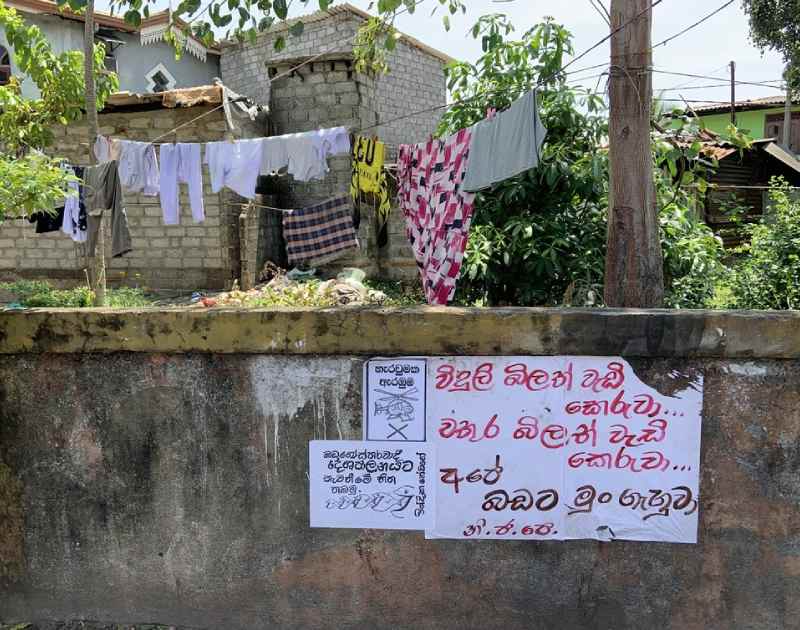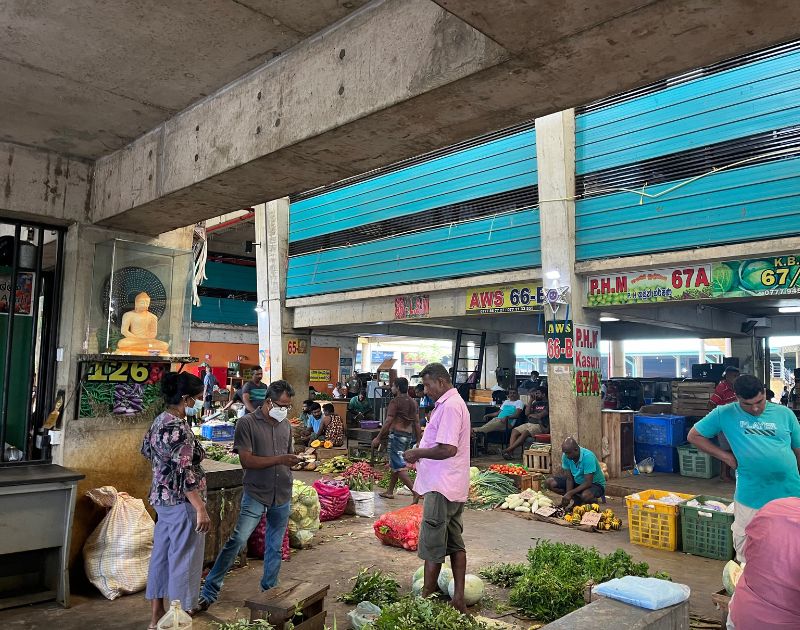
- Home
- Knowledge Insights
- Reclaiming Public Space: Who Is It For and Who Is Welcome?
Reflections by our interns, Minadi Gunawardena and Tara Meyyappan on an exploration of public space in the city of Colombo and how it is experienced.
In July 2024, the Colombo Urban Lab team embarked on a series of exploratory sessions in Colombo to reflect on public spaces in the city. Starting at Independence Square, we took routes that went through major public spaces that we recognised as being synonymous with many people’s lives in Colombo. From Viharamahadevi Park to Race Course Mall, we looked at the purpose of each of these public spaces, and how they are used today. These are some of our reflections on what we felt, saw, and heard.
What is Public Space?
Public spaces are formed and utilised to serve the communities they exist within. The idea of public space has evolved and been reshaped continuously over time to align with the wants and needs of the public, and in the modern day, it is defined as a place where people can affirm their shared rights to a city. Where people can come to work, play, and rest, ultimately shaping how a city is framed.
While the historically physical nature of the public space has shifted from a defined space intended to fulfil common public needs to a space intended to enhance the public experience overall, ultimately, the core principles underlying the purpose of public space still hold true. This would mean that public space, in its multiple definitions, remains central to the ideas of accessibility, community, and diversity in use.
Gender
A key theme that informed our experience was gender. Globally, how women navigate and access public space is influenced by physical, social, and economic barriers. The risk of interpersonal violence, the pressures of social convention, and the physical elements of infrastructure are all gendered influences that erase (or restrict) women from the picture.
We began our walk with a reflection in Independence Square. The team, all of whom were women, sat in a circle inside the square and reflected on our past experiences and thoughts on how the space was built. We were quickly stopped by a security guard who told us that it was prohibited to sit in this way and have discussions for more than ten or fifteen minutes at a time. When asked why, he explained that it was a disturbance to other visitors. We also asked who or what municipality has made this rule, for which he had no definitive answer. He seemed puzzled, almost frustrated, by our questions. Something to note is that we were left to continue in the end. We felt that much of this interaction could be rooted in the patriarchal norms that seek to limit women taking up space.
We also thought about the intersectional components of how these experiences shift for different women. Malathi De Alwis wrote that while all women face hostility in public spaces, women who are discernable as transwomen, minorities, and sex workers face more significant levels of fear and intimidation. It raised questions like whether our clothes, the fact that we spoke in English during our discussion, and the little resistance we demonstrated (through the asking of questions) were why we were allowed to continue to use the space.
Another observation for us is the different ways Sri Lankan women use public space. For us, Independence Square was a space to sit and share ideas on that day, while for some, it was a place to exercise. For others, Racecourse Mall, for example, was a place to sit on the concrete benches until their children finished school. Women also use these public spaces for their livelihoods. We saw informal vendors, the majority of whom were women, at Viharamahadevi Park and the Sports Ministry Complex. In contrast, Independence Square does not have any informal vendors, which flags the question of whether a space is really for the public if its users and uses are predetermined.
An interesting point for us was that we began our walk with no specific list of observations in mind, or preconceived ideas about how, as women, we may be policed, stopped, or restricted. Despite this, we were quickly reminded of how gender shapes one’s experience within these spaces. Recognising that public space is diverse in the ways women use it, whether that is in groups or alone, is a takeaway we would want those who make decisions and policies that shape public spaces in Colombo to consider. This recognition also needs to reach those who fundamentally define what a public space is: the people. Phadke writes that “…all women’s use of public space is legitimate, whether that is to travel, to work, to enjoy nature, to do nothing, to loiter, to smoke, to romance, to dance, or to protest”. We could not agree more.
Security
Another common theme among our observations was the notion of security. Surveillance culture has increasingly become a part of discussions on public space due to the growing commercialisation and politicisation of public space. This is especially the case in Sri Lanka due to increased militarisation post-civil war, which has transformed the face of many public spaces in cities across the island and pushed for urban development projects that aim to emulate “world-class” aesthetics to establish Sri Lanka among the global tourism and business sphere. The usage of signage, security presence, and social policing all contribute to the ways public space is surveilled in an attempt to enforce certain, often political, notions about space usage.
Much like with our focus on gender, the CUL team did not enter this exercise with the intent of observing the surveillance culture in the spaces we visited. However, in recollection, we noticed how many of our experiences were underlined by some sort of interaction with a surveillance mechanism. Independence Square is a popular tourist location in Colombo, promoted as a space to relax, walk, and escape the bustle of the city. At the Square, the patrolling security officers rarely engaged with the perceived tourist population, instead focusing on who they saw as local to chastise them for taking up space in ways they deemed “unacceptable.” The same act of occupying the ground was seen as visiting and admiring for tourists and perceived as loitering for us.
At Viharamahadevi Park, we encountered the most security presence at the Golden Buddha statue, where we were watched closely by security guards at the entrance. Again, we found it important to note that this statue was the primary tourist point of the space. Given the minimal foot traffic at the statue, we concluded that the security presence there, similar to Independence Square, was responsible for preserving an image intended for tourists’ eyes. In comparison, the Race Course complex, while being home to government offices like the Sports Ministry Complex, felt less supervised. It felt as if it paid homage to a mixed bag of function, visitors, and space, and its acceptance of those elements allowed it to be truly of use to multiple groups of people.
Signage also spoke to similar commentary. At Independence Square, phrases like “No Cycling” and “No Sitting” were plastered all across the space. The use of the space was heavily patrolled by such signage, and vague wording like “Keep Discipline” allowed security officers to subjectively enforce what they believed were the rules of the space. Here, it’s interesting to note that the regulations posted on the signage were not intended to promote safety among the public using the Square, but rather to prevent disruptions to the “disciplined” nature that the Square aimed to display.
Although not as explicit, signage at Viharamahadevi Park gave off similar themes as that of Independence Square. The map of the park designated a “Gathering Area,” which upon visiting, we noted had an appearance no different to the rest of the park. We also observed signs near two identical trash bins asking visitors to sort their trash between the bins, but neither bin was labelled for the type of waste it was meant for. Among the signage at the park, we noted that it tied into ideas of civic duty- that the public would exclusively use spaces made for gathering to gather, and that they would make the effort to sort rubbish before tossing it in the respective bin. Signage is seen as “[over-stimulating] the senses and our awareness of the urban environment in much the same way as overt surveillance”. As such, in both Independence Square and Viharamahadevi Park, the use of the space was regulated by the signs posted.
Different forms of surveillance were applied to spaces based on their effectiveness. In open and visible spaces like Independence Square, the physical presence of security surveilled the public. However, in spaces like Viharamahadevi Park, where the area of the space was too large to be monitored by individuals, surveillance was enacted by means of signage and its corresponding sensory surveillance. Regardless, both methods allowed these public spaces to maintain a perception of cleanliness, calmness, and civic duty, none of which were intended for the local eye.
Observation
Our purpose was to observe. Wherever we walked, sat, and rested, we were conscious of our surroundings and constantly looking out for things that felt notable or out of the ordinary to us. Small observations, like the wording on signs, or the comparisons we made between our treatment and that of others, would not have occurred if not for this intentionality.
So… What Now?
Our observations thus far were written under three lenses; identity, interactions, and purpose. For us, our gender formed a large part of our identity, the surveillance of the space shaped our interactions, and the purpose of our visit was formed by our intent to observe. The intersection of all three, and the reflections we gathered, contributed towards a conversation on how we could begin to reclaim the space for ourselves. These elements of each greater theme informed our experiences the most on this particular exploration, but that is not to say that the overall experience of public space is limited to these. When speaking with other members of our team, we heard how a male team member used to sit in Independence Square and study. His experiences were not gendered like ours were. Another team member shared that she often went to Independence Square to exercise, explaining that she felt that she could use the space freely without any security issues. Her purpose for being at the Square was recreational, and she did not form the same observations that we had. Both gave us new and unique insight, and our differences in the subsects of identity, interactions, and purpose allowed us to formulate takeaways that stood apart from one another. This ultimately allowed us to understand the same space in different ways.
In this spirit, how does one reclaim public space? Through this exploration, we determined that there is no single or correct way to do so. Rather, it is about centering yourself and having meaningful conversations on how space can be used as a community, and who does not get to do so. Ask yourself:
Our visits and the exchange of our views with each other, and with our friends helped us fundamentally change the way we see public spaces as a whole. So we encourage you to centre yourselves- your identities, experiences, and your purpose- in the spaces you take up, just as we did. Who knows what you might find out?


